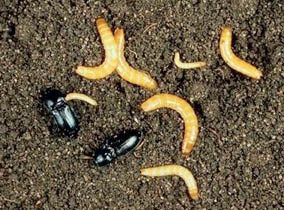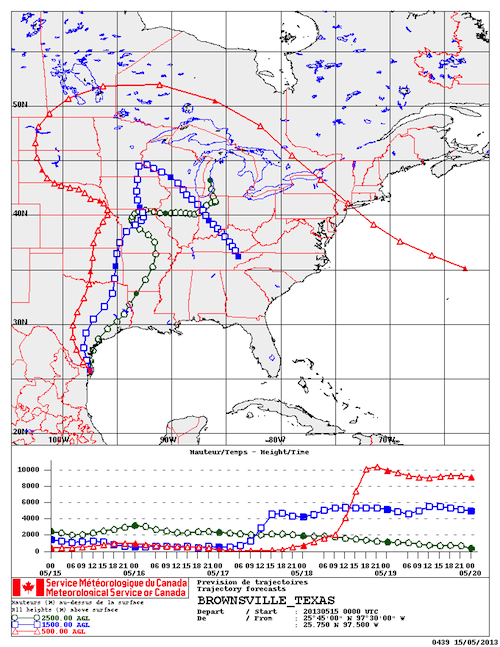
Wireworms. Wireworms have not become the crisis some expected after lindane was pulled from the market, but some fields do have populations at levels that may cause economic loss. Noticeable losses are often confined to small bare patches. Check bare patches to confirm the reason for missing plants. It could be cutworms, wireworms, disease or something else entirely — like Richardson ground squirrels, for example.
Growers do not have options to control wireworms in canola. Some cereal seed treatments can suppress wireworm damage, so fields known to be infested with high wireworm populations may be better seeded to cereals. However, wireworm damage tends to be higher in cereals than in canola. Wireworm rarely causes economic levels of damage in canola. In some cases, a few acres may be damaged but the rest of the field is OK.
Cutworms. South Alberta has had a few reported cases of cutworm, likely army cutworm, damage in alfalfa and winter cereals — fields with green growth in the fall. That threat seems to have subsided, and no cutworm damage has been reported in early-emerging canola in the region.
Any fields that had significant weed, crop or volunteer regrowth last fall should be carefully scouted for cutworm damage as canola emerges. We may be moving out of the risk from army cutworms, but other species have different cycles and preferences. Redbacked and pale western cutworms will not necessarily be in areas of fall growth. Pale western prefers loose soil and redbacked cutworm have shown a trend to pea stubble, but their preferences are not fully understood.
Flea beetles. With warm soils and moisture, canola emergence and establishment should be quick. Warm temperatures also lead to flea beetle emergence. Large flea beetle populations could possibly overwhelm seed treatments. Scout fields after emergence.
Leafhoppers and diamondback moths. These insects blow in on south winds, and just today winds from Texas have turned toward Manitoba. Central Texas is a common area where aster leafhoppers and diamondback moth winter in large numbers. These insects eventually blow into Western Canada in spring and summer when the south winds arrive.

